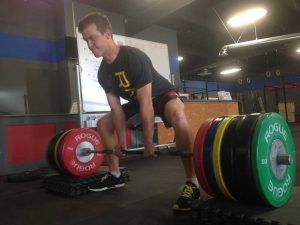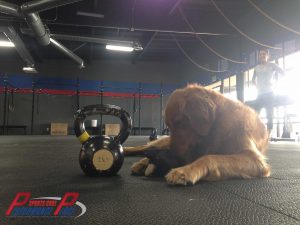Sarcopenia
Sarcopenia is the loss of muscle size and strength, normally accompanying older age. Sarcopenia does affect younger adults as well; inactivity can bring a loss of normal muscle function at any age. It is not uncommon to see people in their 30s to have muscle, tendon or joint injuries due to lack of proper muscle strength, size and overall function.
You may have heard of Osteopenia or Osteoporosis… just know Sarcopenia is the muscle version. Achy muscles and joints can be a sign of Sarcopenia, as well as decreased balance.
Why does Sarcopenia happen?
There are a variety of reasons. Inactivity is the main reason, but an endocrine/ hormonal change is another big one. Either way Sarcopenia is very preventable if these are the two major reasons.
Keep in mind it is not only older people. It can start very early in less active people. Also the less weight training you do the sooner it starts.
People always ask me if they are doing enough to offset Sarcopenia… so I will answers these with a Yes or No and explanation…
Is yoga enough?
No… you need to add more than body weight at some point. However it is great for beginner lifters.
Is walking enough?
No… the forces on the muscles are not heavy enough to force them to reverse the effects.
Is running enough?
No… It’s better but this is “Cardiovascular exercise.” Great for the heart, ok on the muscles/ tendons but it does not take the place of weight training.
Squats and Lunges with no weights?
No… if you can do more than 15 reps and it feels like you can keep going then you need to add weight.
Won’t I get bulky from weight training? (Very common question from women)
No… unless you go 4-5 times a week, lift extremely heavy weights (well over 150 lb. squatting) and probably take a supplement you should be fine. As someone whom trains more frequently and harder than most people it’s very hard for me to understand how untrained people think they are an exception and will get huge from lifting light weights a few days a week. It takes a lot of hard work and dedication to become “bulky.”
I just want to “tone”… is that enough?
No… but it’s better than nothing. “Toning” is often thought of as reps in the 15 and above ranges. Ideally to make good progress in reversing the effects of Sarcopenia you need to be working very hard in the less than 10 rep range. The last few reps should be “hard.”
Why should you care about Sarcopenia?
Aging is often associated with being fragile but that doesn’t have to be the case. I’m sure you have seen a 50 year old who looks like an 80 year old and also one who looks like a 35 year old… this all has to do with how you take care of your body. Keeping muscle on your bones is not just helpful for cosmetic reasons but also for functionality.
How your body works for everyday living is so important. Muscles assist you in sitting, walking, bending over to pick something up, reaching up to get something from the shelf and even more so with the fun stuff, like running, biking, hiking, and playing with your children.
Muscles support the joints of the body and when you build them (not to the “bulky” point) many times pain from arthritis, old injuries and daily aches and pain will decrease.
How to combat Sarcopenia
It’s actually very easy if you have the right guidance. A well-designed weight-training program can show some results within a few months but a poorly designed program can injury you.
Many people think aerobic or cardio will help build muscle but this is only partly true. It will only help to a certain point and it will happen at a much slower rate. Heavier weights are the key.
I know they are scary to some people but I know more people whom have injured themselves running, walking and jumping than weight training. Taking an “deconditioned” person (one who has not lifted or exercised in a long time) through a plyometric/ jumping/ bouncing exercise program is just asking for an injury. Weight training is a much safer way of combating Sarcopenia.
Goals based upon Gender:
These is are very rough guidelines because there are many factors to consider, such as age, past injury, current weight, current body fat, and past lifting experience. But these are very attainable goals for even beginner lifters.
We are going to use IBW (ideal body weight) as a measuring tool. What this means is if you’re 5’7” you should weight between 125lb. and 150lb. as a woman. So just pick a number and use that. If you weight 300lb and are 5’7” still use 125-150lb.
For Women:
– Deadlift 101% of your Ideal Body Weight
– Squat 75% of your Ideal Body Weight
– 15 Modified Push-ups (full depth) within a minute
– 1 Pull-up would be impressive within a minute!
– 2 Minute Plank Hold (no wobbling)
– 30 seconds holding a Single Leg Bridge (no wobbling)
For Men:
– Deadlift 133% of your Ideal Body Weight
– Squat 101% of your Ideal Body Weight
– 15 Push-ups (full depth) within a minute
– 5 Pull-up would be impressive within a minute
– 2 Minute Plank Hold (no wobbling)
– 30 seconds holding a Single Leg Bridge (no wobbling)
I know it may seem like a lot but it’s really not. Most people within 3 months can attain this and they will feel better, look better, and significantly increase their quality of life. It really just comes down to how bad you want it.
I have found one of the hardest theories for people to accept is that weight training is important; more important than being flexible in fact. Flexibility with no supporting strength results in dislocations and cartilage injuries.
I theorize the general public’s lack of knowledge is the main reason why resistance training is not well accepted. In the past most people using resistance training were bodybuilders. Bodybuilders are huge but also in the past they used steroids, in addition to lifting multiple times a day, taking various naps (increases Growth Hormone excretion) and eating very clean. They are the EXTREME.
Once the public starts to understand the evidence behind resistance training I still feel there will be a lag in the numbers of people utilizing it.
Yes, I said most people would still not be lifting… why? Because many people don’t like to work hard, at least that my observation in the Sports Medicine realm. Most people whom drop from a rehab or therapy do so when the provider starts to make the patient do more work. We often have “Passive Care” we give to make the patient feel better at first (deep tissue, ice, heat, E-Stim, Stretching, mobilization etx) and then attack the strength issue with “Active Care,” which can be squats lunges, planks, bridging, deadlifting etc.
I know it sounds harsh to say but I believe in tough love. I was an athlete growing up and if you were late you ran. If you underperformed you road the bench till you improved. There was a reason to work hard.
This is what I tell most people in regards to rehab exercise and weight training… you can do it on your own if you know what your doing. You don’t need anyone like me to watch.
So where can one learn what to do?
Here’s what I always suggest. I have everything I verbally have to say about a deadlift online, on Youtube. Watch it, memorize it, and come in to learn the movement. After the motion looks good we can add some weight. Once you know your 1 RM you can scale the weights. There are thousands of free programs online that are safe. Print one out, bring it in and I will tell you if I like it or not.
Basically it comes down to these steps:
– Do your own research and come with good questions
– Learn the movement under supervision
– Load the bar under supervision
– Form good habits under supervision (may take a month or 6 of one-on-one attention)
– Learn to program your own workout (learn by doing)
– Know your limits, know your form, lift on your own
But most of all, be accountable for your actions. No one will do the work for you. Want it, do it and reap the reward.
I hope this was insightful and motivation for everyone. Understand I am tough on people because I know they have more in them and I never helped anyone I told a lie to. Rehab and combating Sarcopenia takes work.
Understand what is required of you and do work. 🙂


